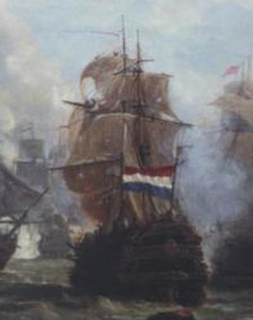This page is based on this
Wikipedia article Text is available under the
CC BY-SA 4.0 license; additional terms may apply.
Images, videos and audio are available under their respective licenses.

USS Mississippi (BB-41/AG-128), the second of three members of the New Mexico class, was the third ship of the United States Navy named in honor of the 20th state. The ship was built at the Newport News Shipbuilding Company of Newport News, Virginia, from her keel laying in April 1915, her launching in January 1917, and her commissioning in December that year. She was armed with a battery of twelve 14-inch (356 mm) guns in four three-gun turrets, and was protected by heavy armor plate, with her main belt armor being 13.5 inches (343 mm) thick.

In the 18th century and most of the 19th, a sloop-of-war in the Royal Navy was a warship with a single gun deck that carried up to eighteen guns. The rating system covered all vessels with 20 guns and above; thus, the term sloop-of-war encompassed all the unrated combat vessels, including the very small gun-brigs and cutters. In technical terms, even the more specialised bomb vessels and fireships were classed as sloops-of-war, and in practice these were employed in the sloop role when not carrying out their specialized functions.

The Battle of Fehmarn (1644) took place north-west of the island of Fehmarn, now part of Germany, in the Baltic Sea. A combined Swedish fleet, with a large element of hired Dutch ships, defeated a Danish fleet and took 1000 prisoners, including Ulfeldt, Grabov and von Jasmund. The Danish admiral Pros Mund was killed in the battle.

The Battle of Cape Passaro was the defeat of a Spanish fleet under Admirals Antonio de Gaztañeta and Fernando Chacón by a British fleet under Admiral George Byng, near Cape Passero, Sicily, on 11 August 1718, four months before the War of the Quadruple Alliance was formally declared.

HMS Anson was a ship of the Royal Navy, launched at Plymouth on 4 September 1781. Originally a 64-gun third rate ship of the line, she fought at the Battle of the Saintes.
Seven ships of the French Navy have borne the name Sans Pareil ("Peerless"):
Twenty-two ships of the Royal Navy have borne the name HMS Falcon. They are named after an exceptionally fast bird of prey.
Several ships of the Royal Navy have borne the name Delft:
Retvizan was a wooden-hulled, steam-powered, 84-gun third-rate ship of the line built for the Imperial Russian Navy in the 1850s. The ship served with the Baltic Fleet until she was stricken from the Navy List in 1880. During that time she was deployed in the Mediterranean for two years. Her engine was removed in 1863 and Retvizan became a training ship in 1874.
The Prins Frederik Willem was a Dutch 68-gun third rate ship of the line of the navy of the Dutch Republic, the Batavian Navy, and the Royal Navy.
The order to construct the ship was given by the Admiralty of the Meuse.

Hercules was a Dutch 68-gun third rate ship of the line of the navy of the Dutch Republic, the Batavian Republic, and the Royal Navy.
The order to construct the ship was given by the Admiralty of the Meuse in 1781.

The Admiraal Tjerk Hiddes de Vries was a Dutch 68-gun third rate ship of the line of the navy of the Admiralty of Friesland, one of five provincial naval forces of the United Republic of the Netherlands' In 1795, following the French occupation of the Netherlands, this ship was taken over by the Batavian Republic, and in 1797 was captured by the Royal Navy.
The order to construct the ship was given by the Admiralty of Friesland.
In 1783 the Admiraal Tjerk Hiddes de Vries sailed to the Mediterranean Sea under Captain Van der Beets. When she returned in the Dutch Republic she was laid up in ordinary until 1795.

The Wassenaar was a Dutch 64-gun third rate ship of the line of the navy of the Dutch Republic and the Batavian Republic, and the Royal Navy.
The order to construct the ship was given by the Admiralty of the Meuse. The ship was commissioned in 1781.
In 1783/1784, the Wassenaar sailed to Batavia under Captain Gerardus Oorthuis.

The Dingyuan class consisted of a pair of ironclad warships—Dingyuan and Zhenyuan—built for the Imperial Chinese Navy in the 1880s. They were the first ships of that size to be built for the Chinese Navy, having been constructed by Stettiner Vulcan AG in Germany. Originally expected to be a class of 12 ships, before being reduced to three and then two, with Jiyuan was reduced in size to that of a protected cruiser.

Beschermer (Protector) was a Dutch 56-gun fourth-rate ship of the line of the Admiralty of the Noorderkwartier. In 1795 she became part of the Batavian Navy, and on 30 August 1799 was captured by the Royal Navy, who retained her in various subsidiary roles until she was eventually broken up in 1838.
The order to construct the ship was given by the Admiralty of the Noorderkwartier.












